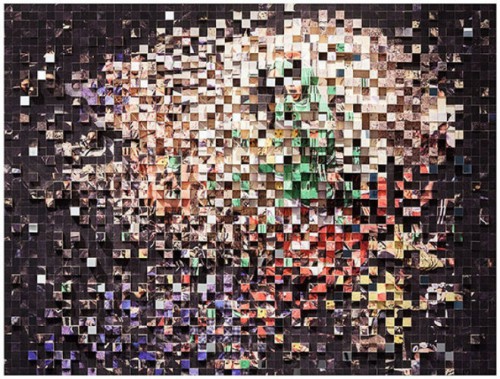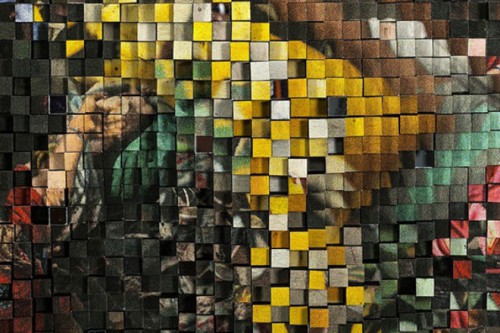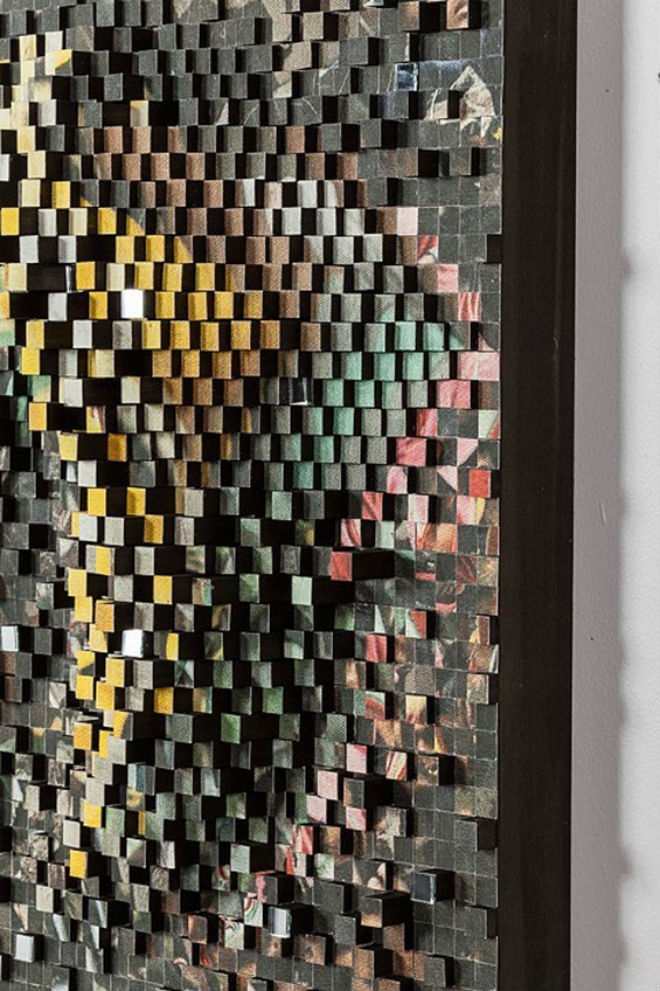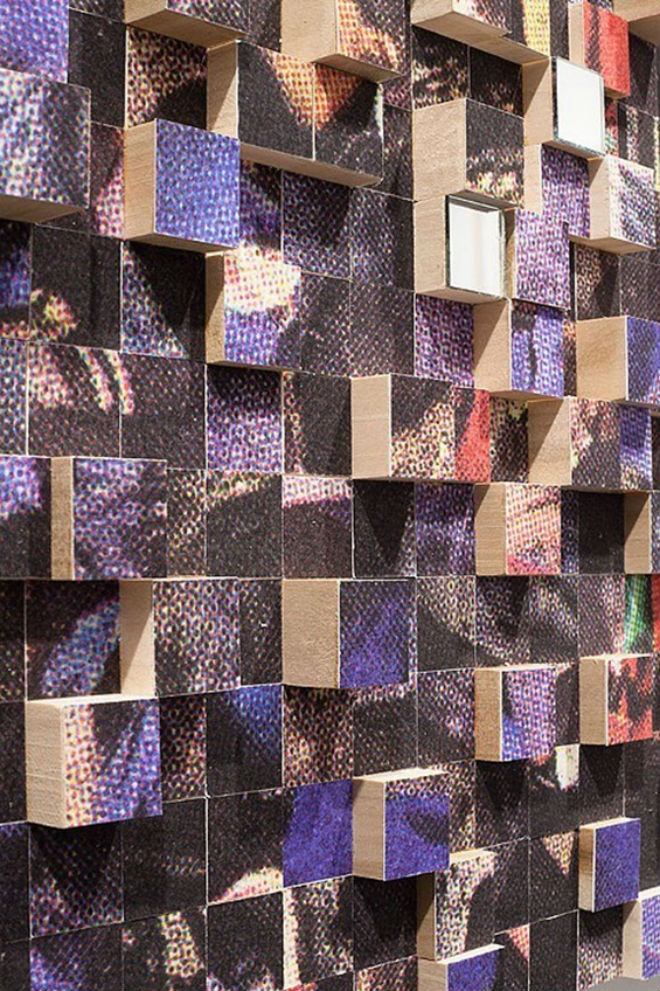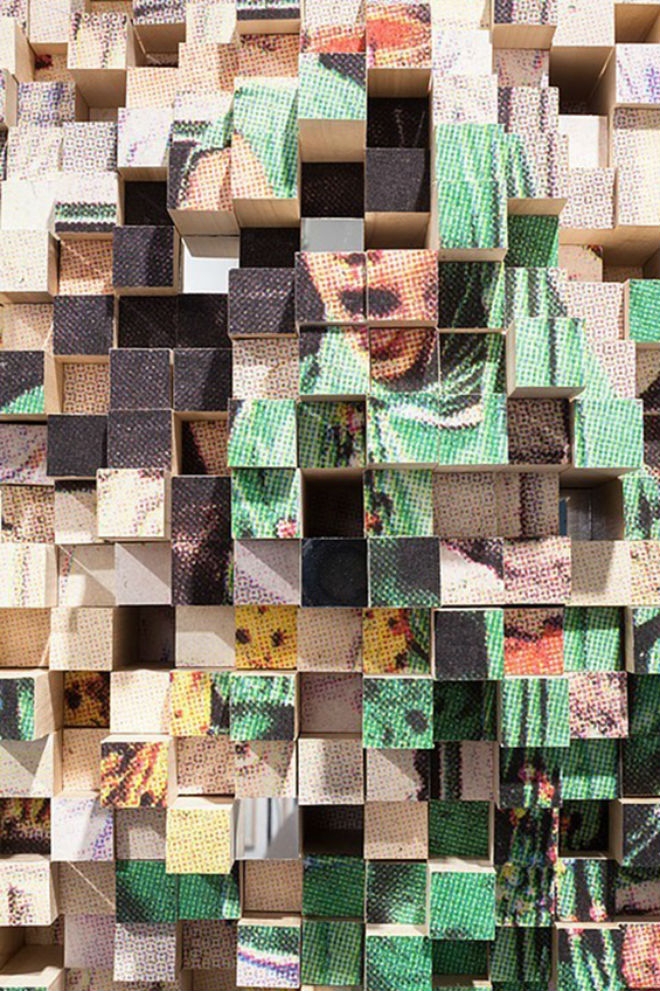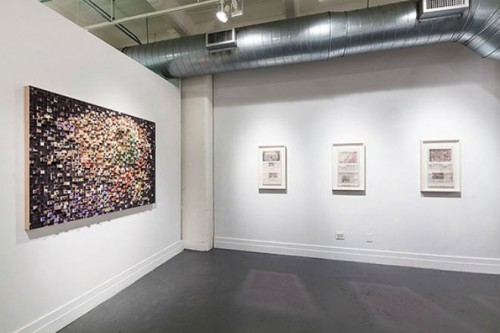Brooklyn-based artist Shanti Grumbine has her own technique of slicing materials and newspapers into a collage of distorted imagery to create an overall end piece. In her series titled Looking Awry, New York Times front-page images are printed in large format. She then cuts and divides the image into hundreds of smaller pieces and rearranges them before mounting the squares onto wooden dowels. Each square resembles a pixel, creating a wild mix of visual stimulation since they are not placed in a random pattern, not their original location. This hodgepodge of colors and shapes are referencing a digital file that is corrupted, in which we can no longer see what is original intended display. Although altered and skewed, we can still make out some of the original image in her work. Upon close inspection, you can make out a woman’s face or remnants of a human body. Grumbine explains her journey while creating her wall reliefs.
These wall reliefs become monuments to the untold levels of mediation between my creative acts and the rest of the world.
Much like digital files move across digital highways or frequencies, Grumbine’s work seems to travel across the composition in waves. As each cut out “pixel’ is mounted on a wooden dowel, the dowels are all different lengths, creating a wall relief. These varying levels, confronting the viewer, form a new textural and visual element. Further engaging the viewers are small, square mirrors that Grumbine integrates into each piece, replacing some of the “pixels.” Now, each captivating piece is not just reaching out at you in waves of visual complexities, but also include fractals of the viewer and its surroundings. You are now a part of the piece, a part of an endless source of aesthetic, digital information.
[via beautiful decay]
